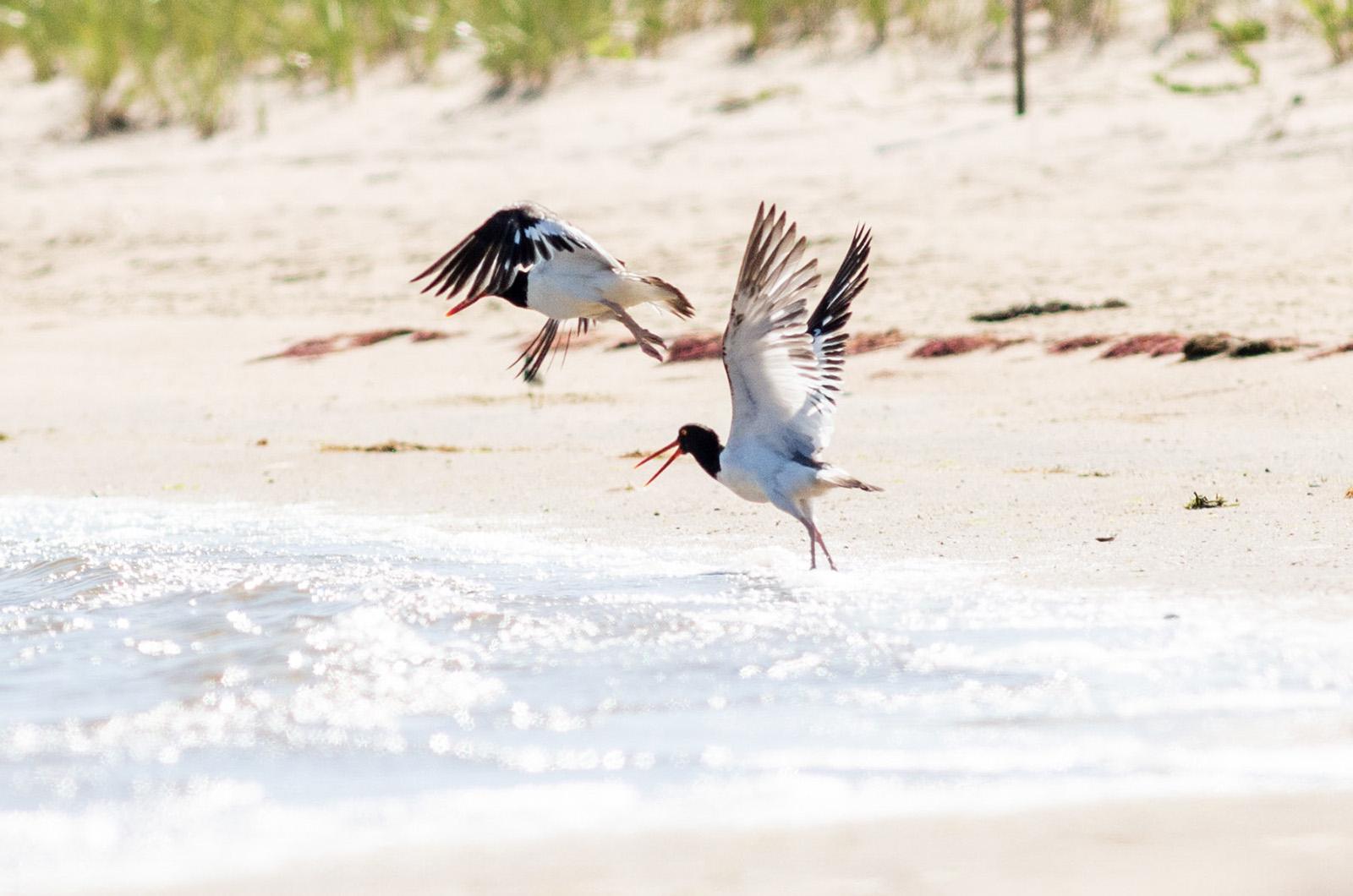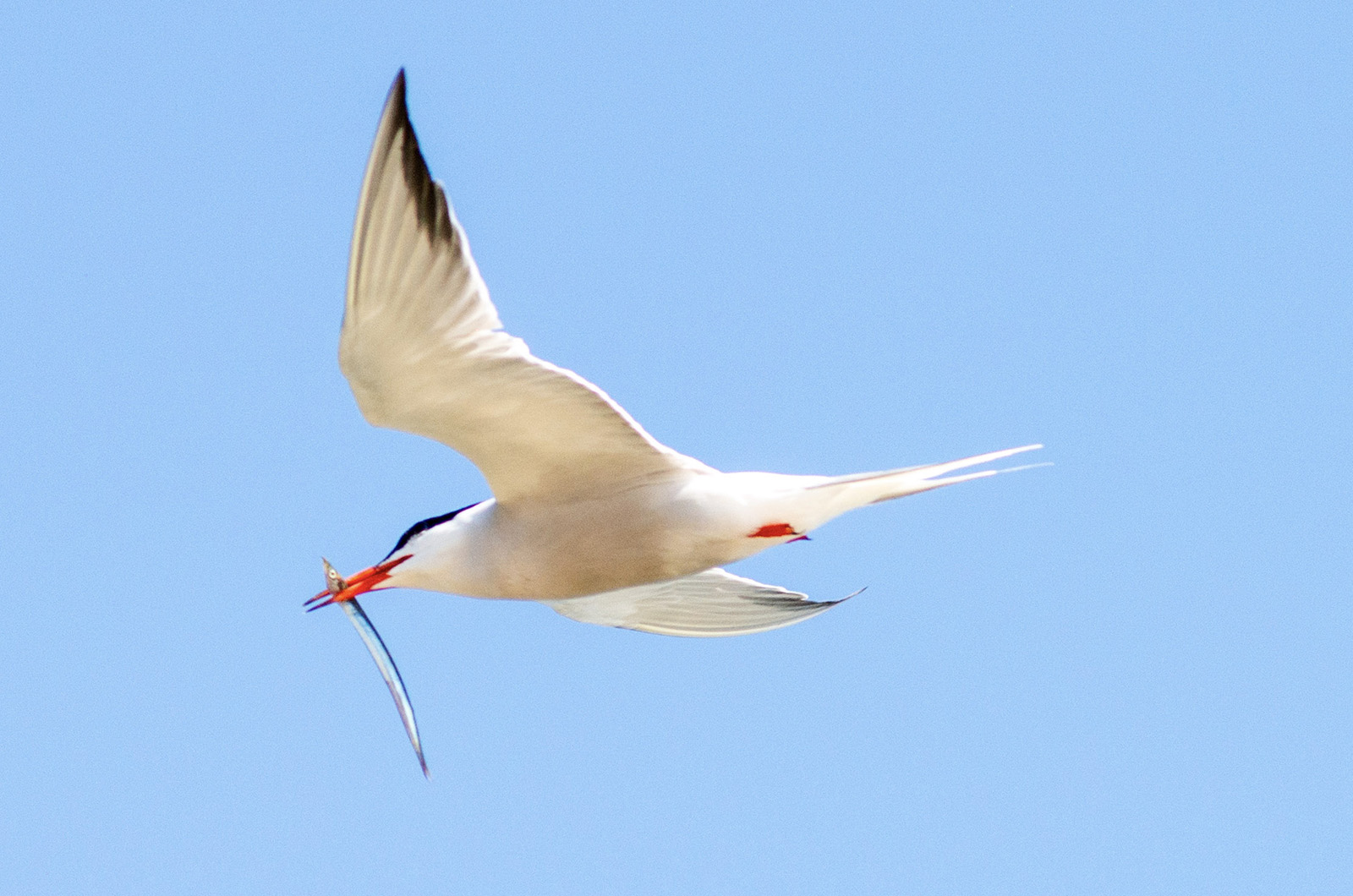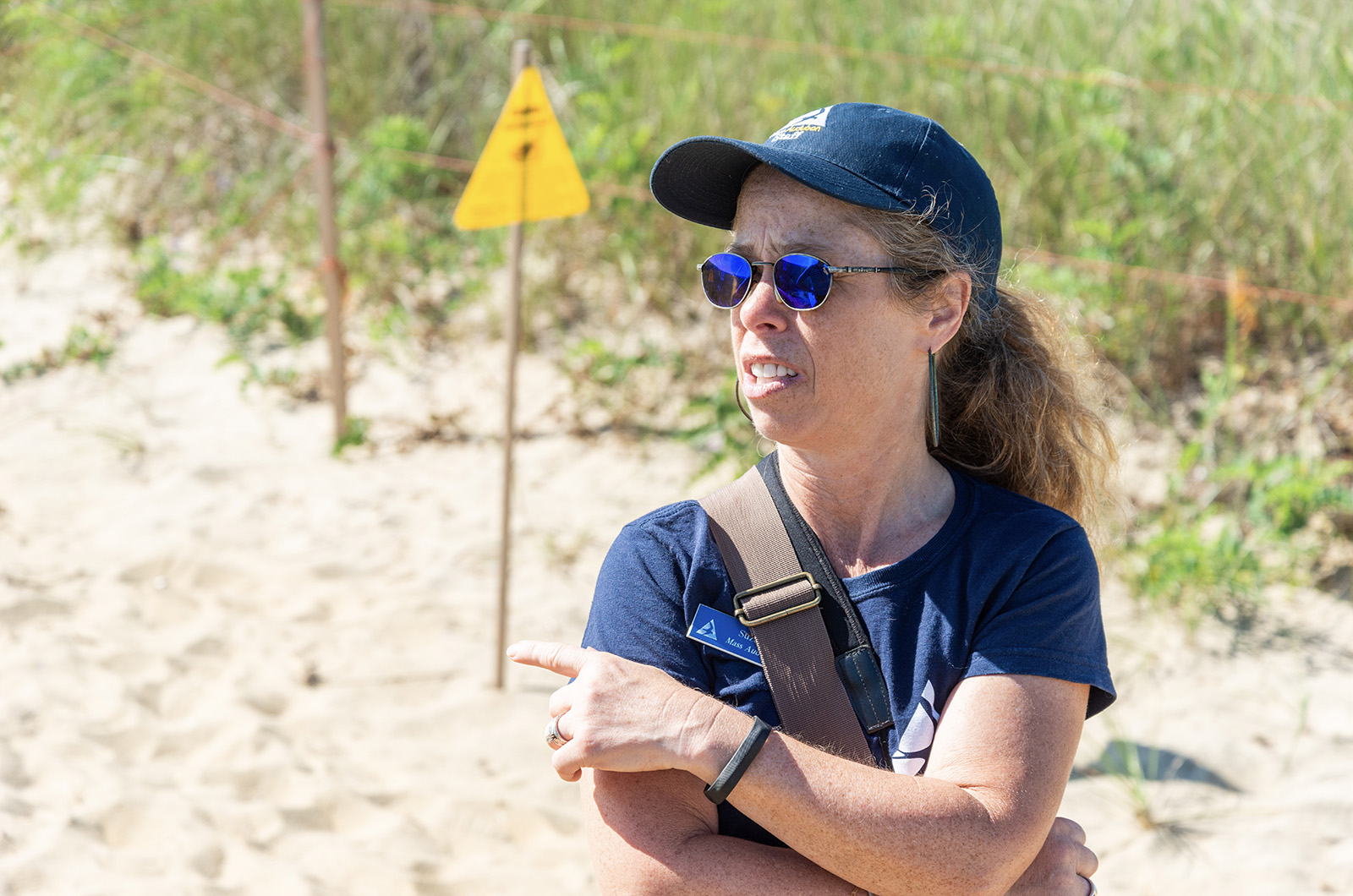At Norton Point Beach, where Edgartown clings to Chappaquiddick with a narrow two-mile stretch of sandy shore, there is an abundance of avian action this summer, noticeable to those with watchful eyes and careful footsteps.
The beach is home to several species of state and federally-protected coastal shorebirds that decorate the sky with their brightly- colored bills and the shore with clusters of speckled eggs. This year, Mass Audubon, a conservation group that monitors the area, has documented unusually high numbers of shorebirds, igniting hope in wildlife ecologists for the future of the species.
Populations of shorebird species have been declining in the state and along the coast for several years. Every breeding season, conservationists take protective measures to keep nests as safe as possible.
Now, with shorebird numbers on the rise around Norton Point, their efforts are showing promise.
During a beach walk interview with the Gazette, representatives from Mass Audubon and the town of Edgartown, the latter of which manages Norton Point, showed off some of the area’s feathered residents, and shared what it takes to preside over one of the Island’s most biodiverse regions.
“What’s happening out here is nothing short of amazing,” said Suzan Bellincampi, the Islands director for Mass Audubon, which oversees wildlife preserves on the Vineyard and Nantucket. "[Norton Point] is one of the major players in shorebird habitat. It’s truly globally significant.”
Nearing a flock of orange-legged birds with black heads and gray bodies, Ms. Bellincampi raised her binoculars to confirm her suspicions: it was the common tern.
After many decades on the decline, populations of common terns have been slowly growing each summer. Norton Point is currently home to about 300 nesting common terns but on any given day, up to 2,500 can be on the shore, said Ms. Bellincampi.
“Most of them are staging,” said Sam Scarfone, Mass Audubon’s coastal waterbird field technician. “During or right before their migration, they all flock together on beaches with really good foraging. They eat as much as they can to build up energy for their migration south.”
Two other types of terns, the least tern and roseate tern, can be found nesting and staging farther down the beach on the most eastern tip of Norton Point.
“We have an exceptionally high number of terns staging here, and are monitoring more of them here than anyone anywhere else in the state right now,” said Ms. Bellincampi. “We have one third of the world’s population of roseate terns . . . and 40 to 60 per cent of the state’s least terns.”
To protect nesting terns and other shorebirds, members of Edgartown’s conservation commission and parks department erected more than 66,000 feet of fencing around the nests and several signs warning beachgoers to keep their distance. When they discover a new nest, they deploy more fencing to include it.
Still, even with the barrier, people often ignore the fence and disturb the nests, said Jane Varkonda, the Edgartown conservation agent.
“You could put up signs until the cows come home,” she said. “But I guess people don’t really read signs, so we have to always come out here to monitor.”
This is Edgartown’s first summer overseeing Norton Point. The county-owned property was managed previously by The Trustees of Reservations, but went up for grabs after the conservation nonprofit decided not to renew its contract in December.
The town officially took over beach management in April, and has since employed several new staff members, purchased new oversand vehicles and partnered with Mass Audubon to ensure the safety of the shorebirds.
Mr. Scarfone is one of five Mass Audubon coastal monitors working with the town to keep an eye on the birds and watch for fence hoppers. He patrols Norton Point regularly, with binoculars slung over his neck and several bottles of sunscreen and water in his pack.
One species of bird he keeps an especially close eye on is the endangered piping plover.
Mass Audubon has counted 16 pairs of nesting piping plovers this year — an increase from last year’s 11. The pairs collectively made 22 nests, but most eggs were lost to predation by skunks and gulls or ocean overwash.
“But one nest that hatched fledged all four chicks earlier this week,” said Ms. Bellincampi.
One of the season’s biggest wins, added Ms. Bellincampi, is that Mo, a tagged oystercatcher that has had difficulty breeding for the last several years, successfully hatched three chicks.
“He has had his regular spot just outside the bay ever since I started working here [five years ago],” said Anthony Cimeno, beach director of the Edgartown parks department. “Every year he would have eggs and nothing would succeed . . . but this year I went out and saw he had three eggs and then all three hatched. It’s awesome.”
Mr. Scarfone said that he anticipates seeing even higher numbers of shorebirds at Norton Point in future summers, as climate change and shifting weather patterns push the birds’ migration farther up the Atlantic.
“All types of shorebirds are shifting north as the temperature warms,” he said.
Norton Point is also a popular destination for recreational oversand vehicle use, but to protect shorebirds, the main South Beach-adjacent entrance is closed to vehicles until migration in the late summer and early fall. For now, drivers with oversand vehicle permits can access Norton Point at a blowout on the eastern side of the beach. People on foot can enter at any location.
“The town of Edgartown and Mass Audubon are doing the best that they can to balance out getting people on the beach and protecting the birds,” said Ms. Varkonda.







Comments (3)
Comments
Comment policy »